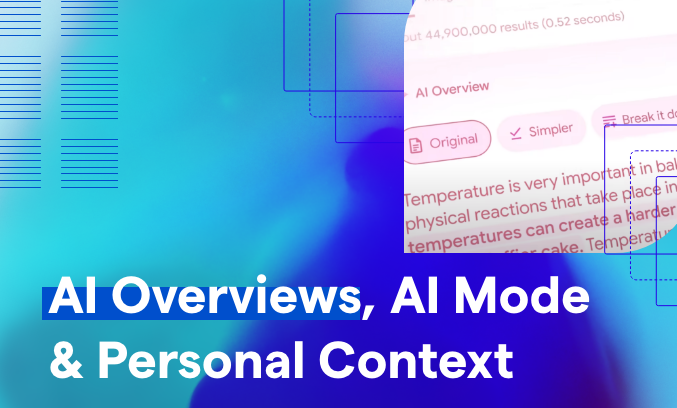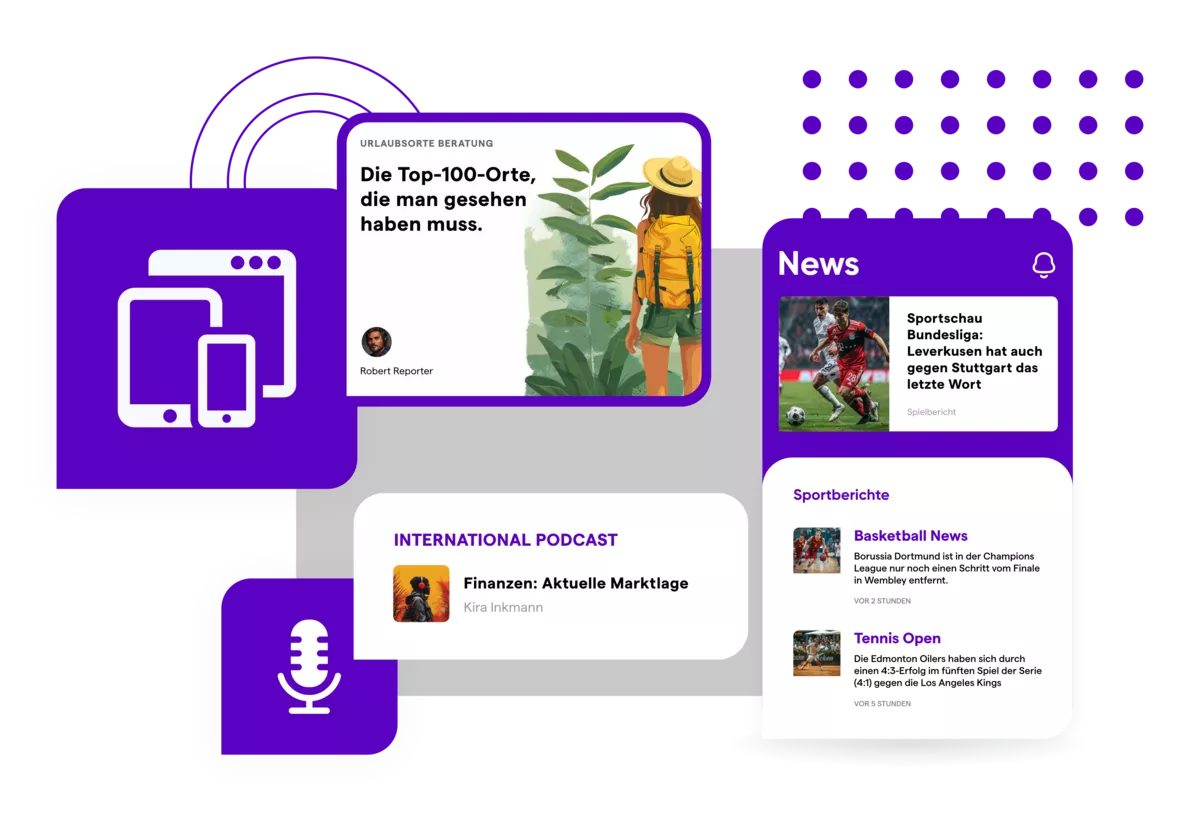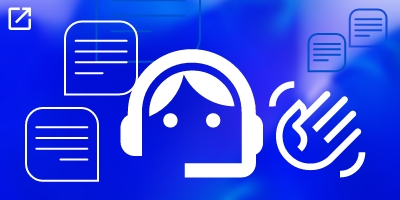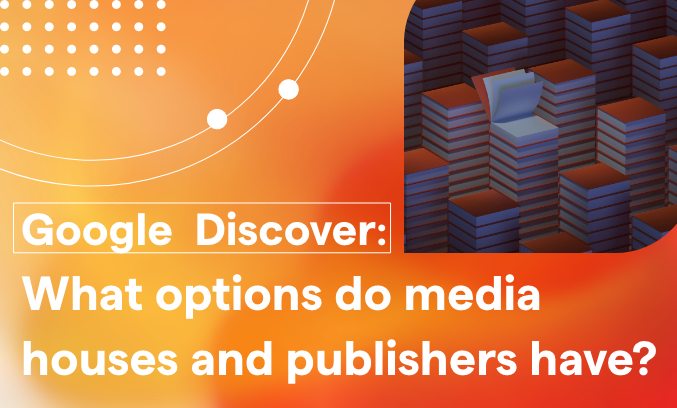- AI Solutions
- Industries
- AI Projects
- Knowledge
- About us
Blog
“AI Summaries” in Google Discover: How Media Organisations Can Stay Ahead

Janina Abou Al Ward
Product Marketing Manager, Retresco
Google has started rolling out AI-generated summaries directly within Google Discover – the personalised newsfeed in the Google Search app – in the US.
While this might sound like a convenient new feature for users, it marks yet another significant blow to media outlets and publishers: early reports indicate that traditional Discover cards – with headlines and publisher logos – are increasingly being replaced by AI-generated blurbs.
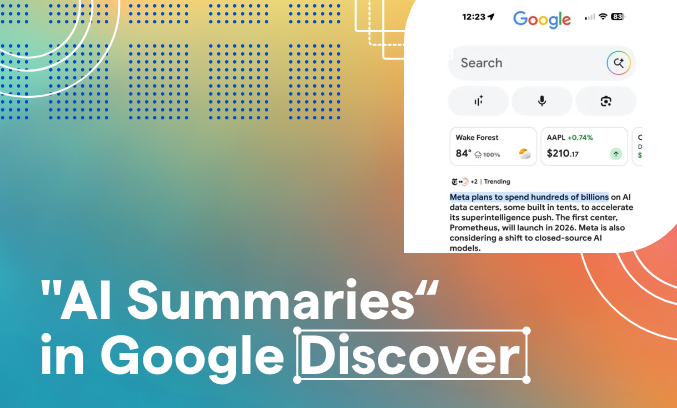
The Effect?
The origin of journalistic content is becoming obscured. Media brands are being pushed into the background. Users of the Google Search app now see short summaries – expandable with a tap – labelled as AI-generated, with a caveat that errors may occur. Only by tapping on the small, overlapping logos can users identify the sources behind the summaries – and even then, these placements are far less visible than before. Unsurprisingly, these sources are rarely clicked on.
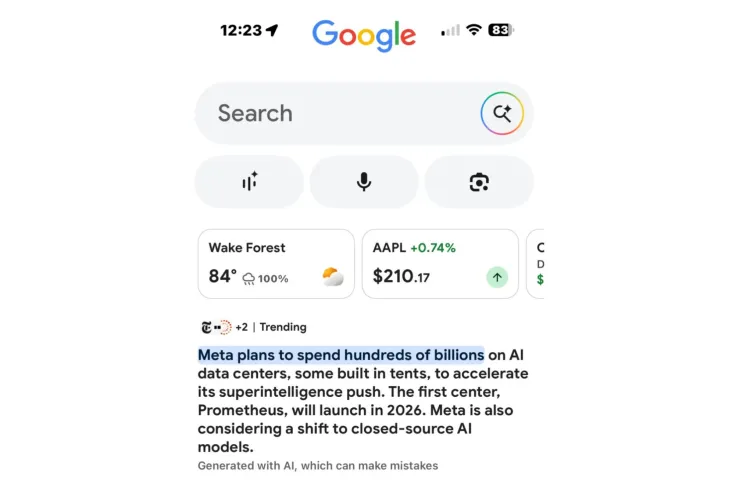 AI summaries in personalised news feeds
AI summaries in personalised news feeds
Why this is a Major Concern for Publishers
This update is part of a wider rollout of AI functionalities from Google:
-
AI Overviews: Summaries directly in search results
-
AI Mode: An experimental mode offering generative answers
-
Audio Overviews: AI-generated audio summaries of content
The shared goal? To provide information faster, more conveniently, and directly within the Google ecosystem – minimising the need for users to ever leave the platform.
The consequences are already being felt: declining click-through rates, lower visibility, and reduced ad revenue. We’ve already seen the fallout – BuzzFeed News and Laptop Mag shut down, and Business Insider laid off numerous journalists – ironically, the same publishers whose content is being used to train Google’s AI.
Google as the Content Gatekeeper – and Publishers Reduced to Data Sources?
The new “AI Summaries” mark a structural shift in the digital news ecosystem. Google is no longer just a distributor of content – it’s becoming a content provider. Traditional media are being relegated to raw material suppliers for Google’s products, with little in return – no meaningful traffic, no brand recognition, no tangible value.
What Can Publishers Do to Avoid Being Left Behind?
Just like AI Overviews and AI Mode, Google Discover now downplays or even omits source attributions. That’s why publishers can no longer afford to rely solely on optimising content for Google’s platforms.
Instead, media organisations must invest in direct, sustainable relationships with their audiences. The aim should be to drive engagement and monetisation independently – through high-quality content hosted on owned platforms, regular interaction, and user-centric experiences.
Tools like newsletters, apps, community offerings or paid content models can reduce dependency on third-party platforms and keep monetisation in publishers’ own hands.
Data Sovereignty is the New Competitive Advantage
In a world where Google summarises instead of linking, first-party data becomes a strategic asset. Knowing who reads what, when, allows for better targeting, tailored messaging, and custom revenue models – from paywalls to personalised ads and newsletters.
Publishers already sit on a goldmine: curated, editorially-verified content – the perfect foundation for building proprietary AI solutions. But the quality, structure and accessibility of this data are key. The cleaner and more enriched the dataset, the more effectively it can be personalised, monetised and automatically distributed.
In short: owning your data is owning your future.
From Reach to Relevance – Strengthening Direct Audience Relationships
In an age of AI-driven content feeds and algorithmic recommendations, one truth stands out: direct relationships with readers are publishers’ most valuable asset.
Media must become a daily habit again – like the morning paper or evening streaming session. To do that, content needs to be relevant, useful, and emotionally engaging.
A strong example comes from The New York Times with its interactive quiz format “Wordle” – a playful, engaging tool that draws new audiences and keeps them coming back. Supported by AI-powered web analytics and community features, it builds loyalty and deepens the user experience.
The Message is Clear: Owned Media Must Come First
Newsletters, apps, push notifications, podcasts and AI-powered chatbots aren’t nice-to-haves – they’re essential to regaining control. Loyalty offerings, daily briefings and gamified formats encourage habitual use. Trial subscriptions and interactive services provide low-barrier entry points – with measurable ROI.
Know your users. Build loyalty. Integrate them into your content ecosystem. That’s how you stay relevant – even in an AI-first world.
Winning Back Visibility and Relevance with New Formats
Success in the AI-driven media landscape requires more than publishing articles. Content must be reimagined, strategically distributed and sustainably monetised.
The key? Data-driven, AI-supported journalism that makes content more interactive and personalised:
-
Interactive Q&As create conversational experiences from existing content
-
Automated newsletters and personalised audio briefings deliver relevance in real-time
-
Generative AI enables efficient repurposing of content for new use cases
The Neue Pressegesellschaft has launched a powerful example with its “FragMich” assistant: users ask open-ended questions about local topics and receive context-based answers, generated from the publisher’s archive of editorial content – complete with source references and further links. FAZ is testing a similar concept to serve the Rhein-Main region.
Even audio formats hold massive potential. Die ZEIT is experimenting with podcast trial subscriptions directly via TikTok – gaining thousands of new subscribers within weeks. The key? Reaching new audiences without cannibalising existing channels.
Those who invest in their own innovative formats today are not only positioning themselves closer to their audience – but also more independently from the traffic dictates of major platforms like Google. Proprietary, dialogue-driven and AI-supported offerings become a strategic lever for visibility, engagement and monetisation.
-
Trust is the New Marketing – Publishers Need Fans, Not Clicks
As Google Discover becomes increasingly anonymous and summarised, trust becomes the most valuable currency in digital publishing.
Users want reliability: transparent sources, thorough journalism, and responsible use of AI. Once earned, this trust fuels loyalty, engagement and monetisation.
But quality must not only be delivered – it must be felt. Especially among younger audiences, who are highly discerning and brand-agnostic, authenticity matters.
People Follow People – Personal Brands Boost Reach
AI summaries blur the lines of authorship. That’s why personality, voice and perspective matter more than ever. Journalists bring the humanity that AI lacks. And users don’t follow logos – they follow individuals they trust.
Personal brands can:
-
Deepen brand loyalty – journalists become ambassadors
-
Expand reach – content travels through personal channels
-
Encourage interaction – via dialogue and direct feedback
-
Reach new audiences – through authenticity and community-building
Journalists like Paul Ronzheimer (BILD) or Ole Reißmann (Spiegel) show how it’s done – consistently visible, relatable, and valuable to their media brands.
Publishers should empower editors to build their own formats and voices – with clear frameworks but without stifling editorial freedom. It applies equally to national titles and regional outlets.
People trust people – and they’re more willing to pay for journalism when there’s a human behind it.
-
Substance Over Sameness – Editorial Excellence as a USP
The simpler the content, the easier it is for AI to replicate – and for platforms to summarise. But deep journalism can’t be automated. Investigations, expert analysis, interviews and data storytelling are exactly what AI can’t provide: context, nuance, and credibility.
That’s where the strategic value lies. High-quality journalism stands out in a sea of commodified content.
Those who prioritise:
-
Quality over quantity
-
Originality over repetition
-
Depth over clickbait
… attract discerning, loyal audiences who are willing to pay – and create clear competitive advantages beyond algorithmic feeds.
-
Media Needs Protection – Clear Rules and Fair Compensation
As Google transforms and rewrites content with AI, a crucial issue remains unresolved: Where is the fair value exchange for publishers?
There’s a clear need for:
-
Transparent source attribution
-
Mandatory links to original content
-
Clear, enforceable rules on how generative AI can use publisher data
Without this, journalism risks being further devalued – both economically and in terms of visibility.
-
Why Google Discover Still Matters – Even with AI Summaries
Despite growing automation, Google Discover remains a powerful distribution channel. With the right strategy, media organisations can still surface their content where users are most engaged – in the flow of their mobile habits.
Success requires understanding the mechanics: clean tagging, strong headlines, and timely topics. Used wisely, Discover can amplify editorial work – not replace it.
Final Thought: Take Action Now – or Risk Falling Behind
Google’s AI Summaries are not a future threat – they’re already reshaping traffic and revenue dynamics. To remain relevant, publishers must act: with bold strategies for direct distribution, user access and smart content delivery.
Local outlets, niche publishers and specialist editorial teams have a unique advantage: they offer journalism that AI can’t replicate.
At Retresco, we partner with media organisations to help them distribute their content intelligently and harness AI in ways that strengthen their position.
Questions, ideas or feedback? We’d love to hear from you. Let’s talk.
Recent Blog Posts
